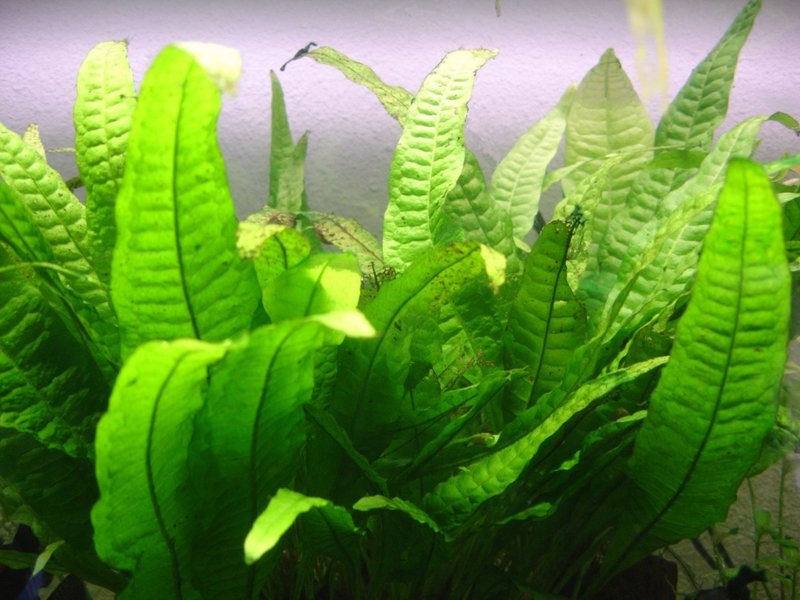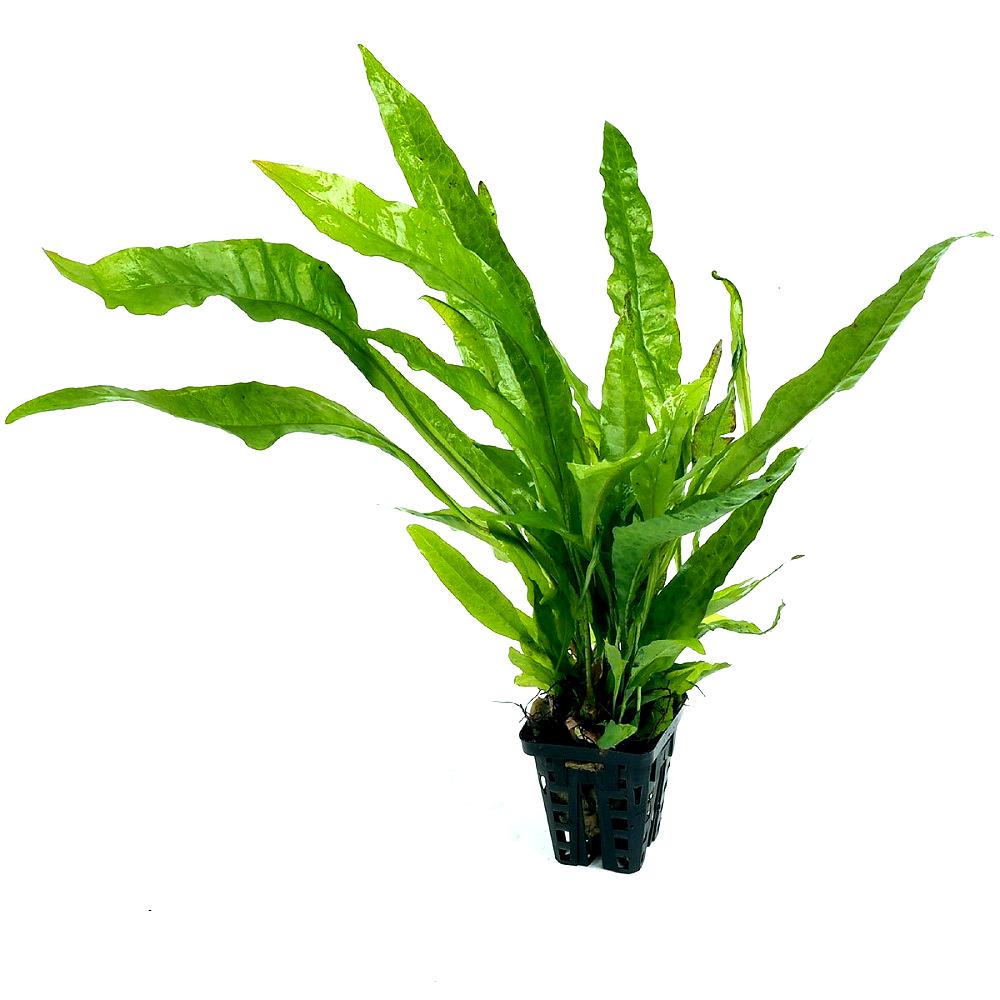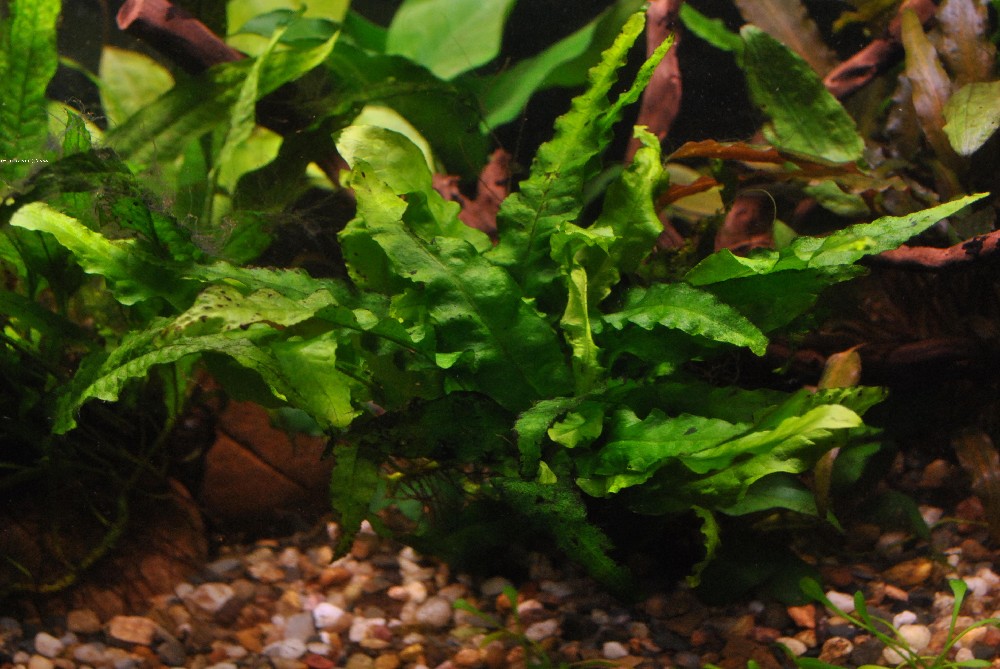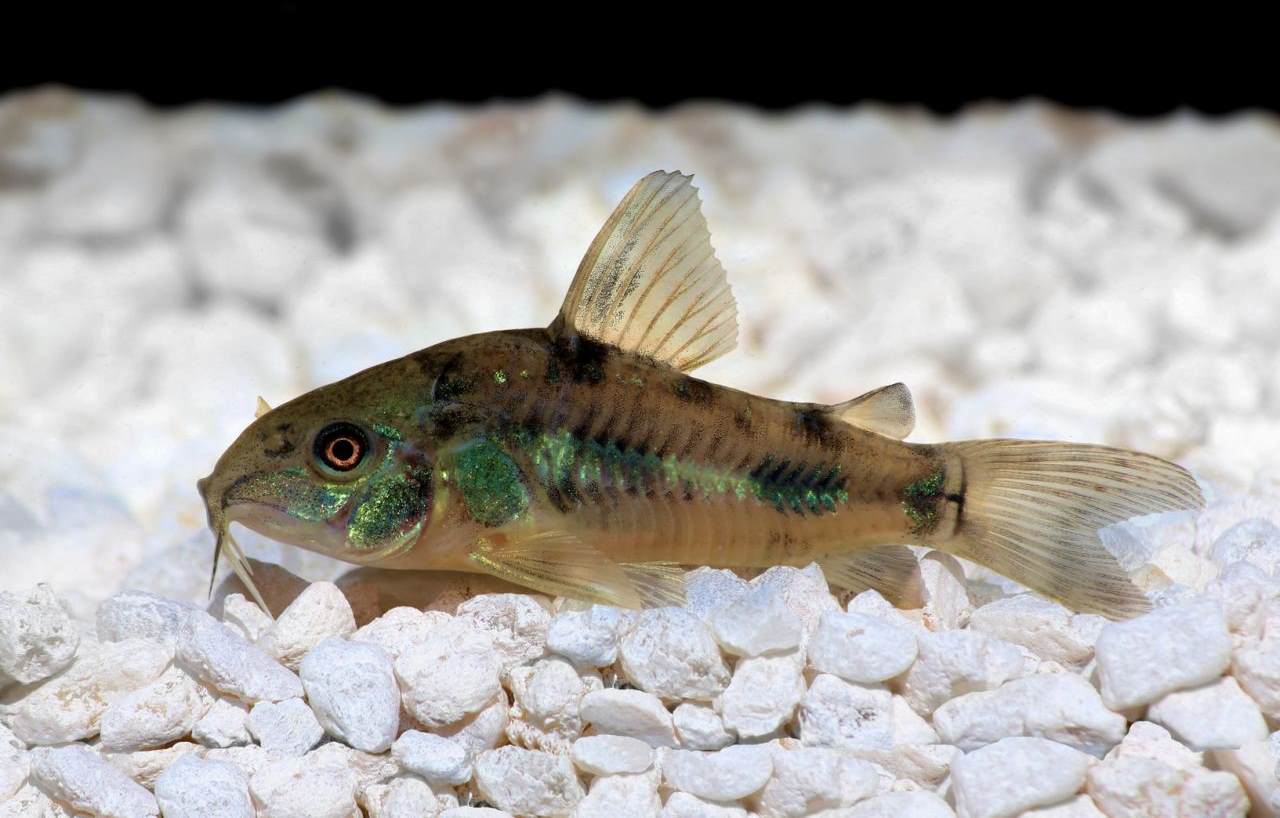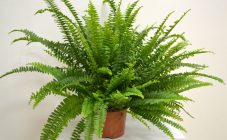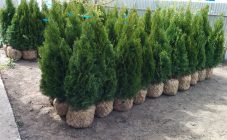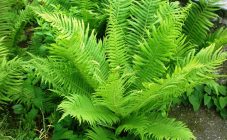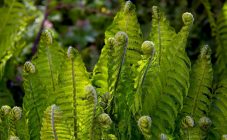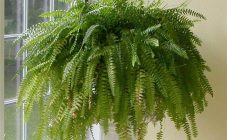Content:
Thai fern is an interesting plant, with a long, creeping rhizome, from which the continuation of the lanceolate leaves with transverse grooves is taken. Popular for its unusual appearance and brightness.
Representative of the Ferns, the Centipede family. Its unpretentious care has made it popular with aquarists.
Description of the variety
The place of origin of the Thai fern is Southeast Asia, where it grows in colossal volumes in local water bodies. In particular, the hot regions of Thailand, as evidenced by the name of the plant.
Thailand is considered to be the most optimal fern growth region. There it reaches more than half a meter in height, it is distinguished by a special liquid bright color.
A small plant - 25-50 cm, characterized by a long, creeping, hard rhizome with alternate, lanceolate, bright green or dark green leaves located on it. The accessory roots are dark brown, slightly covered with small villi.
Types of Thai fern differ in the shape of leaf blades:
- The Thai Vindels fern - differs in unusual leaves with carved, dissected edges, reminiscent of deer antlers, the plant is small, reaches no more than 15 cm, the bushes look magnificent, rich;
- Thai fern Trident - leaves with edges cut into three parts, vaguely resembling a trident;
- Narrow-leaved Thai fern - has long, narrow leaves, no more than 1 cm in width and about 18-20 cm in length; in natural conditions, the narrow-leaved fern forms huge thickets, similar to dense forests; in the wild, fern leaves are distinguished by a bright, juicy color, in the aquarium the leaves fade and do not grow more than 10 cm;
- The pterygoid fern has large leaves that reach up to 30 cm in captivity (aquariums), and in the natural environment up to 45 cm, they form dense, dark green thickets.
Landing technique
Priming
The soil is not an obligatory element for Fern, since their rhizomes are located on top of the soil, the root system is very poorly developed, the silt accumulated at the bottom is quite enough for it. Therefore, the composition of the substrate does not matter for the plant. Ordinary slats, large stones will do. Any type of silted soil or fine sand would be an excellent option. It is enough to fix a young bush among stones or fish houses. You can tie the plant to a stone, driftwood with ordinary fishing line, or glue it with superglue (the area of contact of the plant with it dies off, so it must be minimized).
Reproduction
Thai ferns reproduce by adventitious processes - a kind of small, but already formed plants that form on old leaves.
In addition, the rhizome is divided into sections with 2-3 leaves, which are relocated to a new place of residence.
It is not difficult to plant a plant; to “root” the fern in a new place, it is enough to tie the branch there.The bushes are fixed no closer than 10-15 cm to each other, a denser planting worsens the growth of plants and leads to the plexus of their rhizomes.
Self-propagation occurs from new growth buds that form on the roots of old leaves. Old leaves gradually darken and die, and a young bush floats to the surface, over time it develops a rhizome, under the weight of which the fern settles to the bottom.
Spores are formed on the underside of the leaf, along the edges, in exceptional cases - on the adventitious roots. Spores require full immersion and soft water to reproduce.
Plant care
Keeping a fern is a simple matter, it is quite easy to care for, but still some conventions should be observed.
Temperature and chemical indicators of water
In aquarium conditions, the fern feels most comfortable at temperatures from 24 ° C. At lower rates, growth slows down significantly, given that the plant is not growing fast anyway. At 18 ° C, its growth stops completely.
Slightly acidic or neutral water with a hardness level not exceeding 6 ° C is ideal. Such indicators are set in old, long-unchanged water, so it is not advisable to replace it often.
Lighting
The fern is extremely picky about light, it should be strong, at least moderate. Shading affects growth. Natural light is ideal. In its absence, you can resort to using incandescent and fluorescent lamps. The length of daylight hours is at least 12 hours. It is important not to overdo it in lighting, it is destructive for the plant.
Attention! Transparent or brownish leaves indicate excessive lighting, then it should be reduced.
Top dressing
The fern has no "true" root system; it absorbs all the nutrients from the water. Mineral feeding is recommended 1-2 times a month for the fern, which has a positive effect on its growth.
Minimum doses of trace elements are allowed no more than twice a month. Nitrogen fertilizers are applied more often 2-3 times a week, 1-2 granules of urea per 100 liters of water.
Pruning, pruning is not required for the plant, since it is already growing slowly.
The lack of carbon dioxide (CO2) feed is not critical, but its presence has a beneficial effect on the general condition of the fern and the color of the leaves.
The fern reacts extremely negatively to any concern, therefore, fish are caught as rarely as possible, plants are transplanted. It is not necessary to purge the aquarium intensively, turn on a strong current of water. Cohabitation with overly active, constantly burrowing fish will not suit him. Poorly tolerates turbid water, suspension. It is undesirable to keep the fern in too small, cramped aquariums.
Diseases and pests
The pests of the Thai fern are bottom fish that like to dig into the soil. It is advisable to systematically carefully remove the areas damaged by them, for a new growth of the aquatic plant.
It is undesirable for the fern to coexist with the following types of fish: variable corridor, catfish, agamixis. Ideal for: guppies, anubias, apistograms, scalars, swordtails.
Improper care can harm the fern: lighting - will burn the leaves, affect their color, hard and acidic water - completely ruin the foliage, stop the process of reproduction and growth.
Use as decoration
The Thai fern is an excellent decoration for the underwater kingdom. The home aquarium is significantly transformed, the plant fills the container with its bright bushes.The Thai fern allows you to create a variety of compositions of stones and underwater objects, forming green gardens in a short time. It literally enlivens the aquarium, perfectly complementing an underwater snag or a fish house.
On its foliage, stems, small species of fish can throw caviar. Viviparous individuals can safely retire in the thickets of the plant, and the weak ones can hide from aggressive neighbors. The fern creates a cozy, peaceful environment, ennobles the territory, does not require special care.
